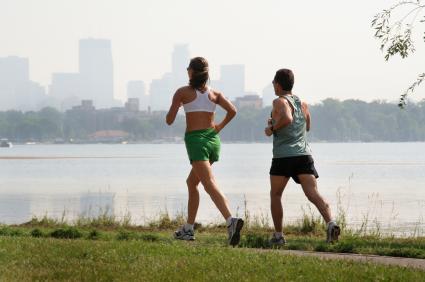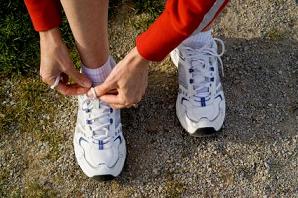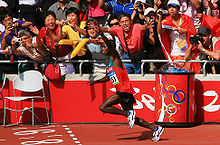Serious cyclists, who spend big bucks on their bikes and log lots of hours in the saddle, will often invest in a personal fitting, available at more and more quality bike shops. A fitting, almost always done by appointment, can take over an hour and cost upwards of $100, though some are complimentary (usually with the purchase of a very expensive bike).
There are several schools of bike fit. The older theory is machine-based. It involves adjusting a universal, bicycle-like machine to each rider, taking measurements, and applying the measurements to that rider’s own bike. The newer, “organic” school is more movement-based and yoga-influenced, in that it takes the rider’s physical range of motion into account. It relies much more on the skill and experience of the fitter than on a fit-bike machine.
Ultimately, there are a few basic tenets of bike fit, and these center around the contact points with the bike: pedals, saddle, and bars. The process begins by getting the rider is on the right frame for his or her size.
Bike Fit and The Right Frame
To get the rider on the right frame, a fitter will first look at "standover height," the distance between the top tube (the horizontal frame member) and the rider's crotch. On a traditional road frame or fitness hybrid, there should be about an inch or so of clearance. A mountain bike rider may prefer a little more. While this measurement is general, the fitter will take into account eccentric frame geometry, the rider's purpose and goals, and any physical limitations or anomalies.
Fitting Bicycle Pedals
A good fit starts at the pedals and works upwards. The ball of the foot should be positioned approximately over the pedal axle. The joints where the toes meet the foot is usually (for a road bike) positioned a centimeter or so forward of the axle, which alleviates pressure on the sensitive nerves between the toes. A fitter will usually position the foot by dropping a plumb-bob from the knee to the axle and moving the saddle forward or backward to adjust the foot position.
To achieve and maintain this positioning, some form of foot retention is mandatory to keep the shoe in one place. Clipless pedals are the best option, but toe clips and straps will suffice for the rider who is intimidated by clipless pedals. Choice of pedals should be made before the fitting.
Saddle Position
The saddle’s fore-and-aft position should have been determined when the foot was placed, as it is dependent upon the length of the rider’s femur.
Saddle height is trickier, depending more on rider preference, though many fit experts will say that most cyclists, especially “serious” road riders, ride with their saddles too high. The old wisdom that the leg should be slightly bent when at the bottom of the pedal stroke is correct to a point. How much the leg is bent remains problematic and shouldn't be just loosely estimated.
The fitter looks at the heel in relation to the pedal axle when the downward knee is locked in a stationary position; the heel should be a centimeter or two below the ball of the foot. Also, when pedaling, the angle between the rider's foot and the front of his/her leg should not open at the bottom of the stroke. Nudging the saddle downward will eliminate this unwanted action.
Handlebars and Hand Position on The Bike
This last adjustment may seem the most important, as it affects the rider's angle of lean, stretch of the shoulder muscles, reach, and perceived comfort. But it can only be set after the feet and the saddle are positioned correctly.
While road racers still prefer their bars in a low position, well below the saddle, the trend today is toward a more relaxed hand position. A few centimeters of bar height can go a long way toward putting the rider in a comfortable, yet ergonomically correct, posture on the bike.
A good fitter will have a selection of stems (the piece that attaches the handlebars to the bike) in varying length and angle of rise. The right stem length and rise will put the rider in the perfect position.
Finding a Bike Fit Expert
The rider seeking a good fit should find out his local shop's philosophy of fit and its fitters' accreditations. If possible, talk to someone who has been helped by the fitter – satisfied fit customers are usually quick to talk about their experiences.
Benefits of a Good Bike Fit
The benefits of a "dialed" fit cannot be overestimated, especially in road riding, where the rider often stays in the same position for long periods of time. In addition to enjoying ergonomic and aerodynamic efficiency, a well-fit rider will have fewer pains in the back, neck, and hands. Comfort is more important to most riders anyway, so investing in a professional fit session is often seen more as a necessity than an extravagance. (Think of how much money golfers spend on lessons.) The elusive "all day position" on the bike can be just one fit session away.




